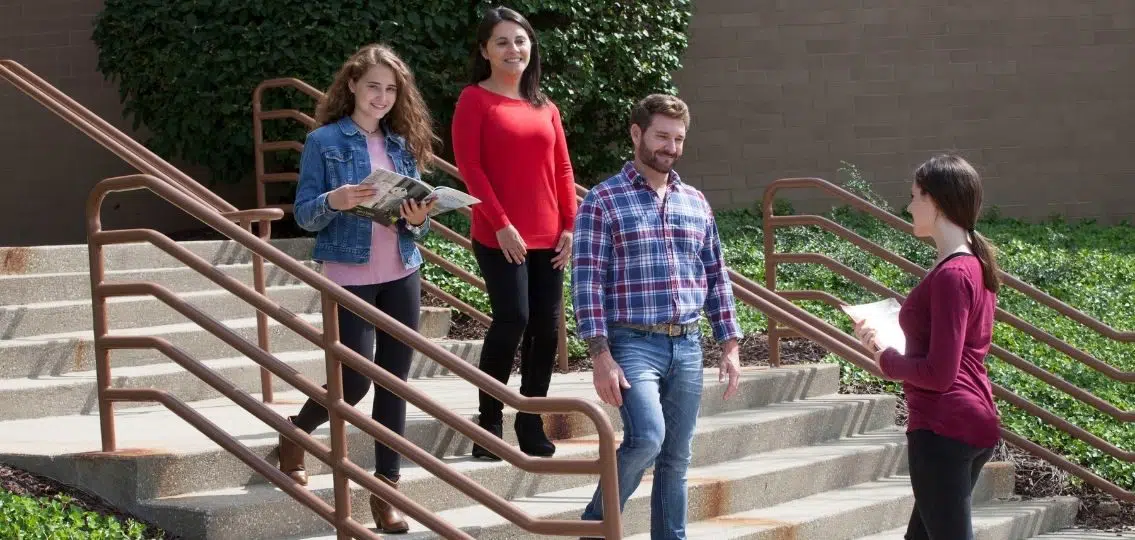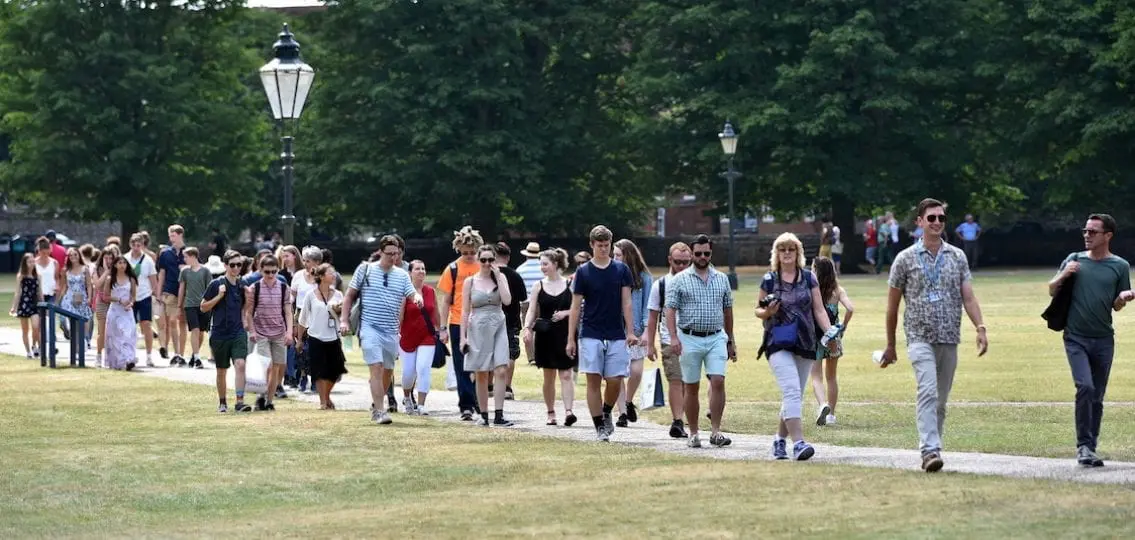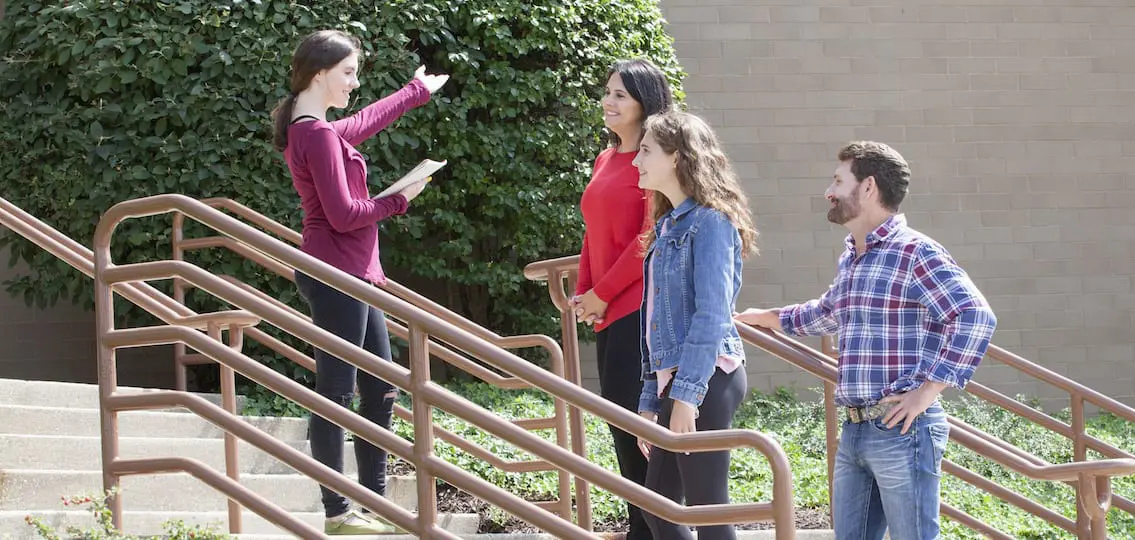As a parent of four very different children, I have visited all types of colleges: small liberal arts colleges, medium-sized state schools, Ivies, and large state universities. Although each college is different, after a while, the information sessions sound the same.

You may find that your teen rejects one college after another, or perhaps likes each new one even more than the last. Visiting colleges can be overwhelming and you may wonder how you are going to make it to the point where everyone involved decides which place is “the one.”
Demonstrated Interest
Visiting colleges is also important for another reason. Colleges want to make sure they are accepting students who are likely to attend.
When considering students for admission, one of the things colleges look at is a student’s “demonstrated interest.”
This is very different from when my husband and I applied to college, so this fact caught us off guard. Our oldest had applied to a few schools without visiting them beforehand. One of these ended up being the perfect school for her, which we of course didn’t know until shortly after arriving on campus for Accepted Students Day. However, the school thought she wasn’t interested and did not have a financial aid package prepared; furthermore, they were not sure if there were any remaining funds available.
Other students I know were not accepted right away to schools they had not visited and ended up on a waiting list. If there are circumstances that prohibit visiting a school your child is applying to, make sure there has been other contact (via email or phone or attending a local event) to indicate interest.
If you do plan on visiting colleges, it’s important to make the most out of the visit not just to demonstrate interest but more importantly, to help determine if it’s a good option. When making college visits, it’s important to make the most of it.
College Visit Checklist: 6 Helpful Tips When Making College Visits
1. Know what’s available and reserve your spots.
Most schools prefer that you reserve a spot (some require it) for the events during your visit. Depending on the school, there may be a group information session and tour, a private tour, or time to speak with an admissions officer. Some schools offer admissions interviews; others do not. In some cases, your child can sit in on a class or even stay overnight with a student. Many schools also have an open house, often on a Saturday, with more extensive programming. This information is usually spelled out on the “admissions” section of a college’s website. Typically, you can reserve a spot online, but don’t wait until the day of — or even the week before — as events can fill up, especially during the spring.
2. Pack snacks.
Most colleges have set times for information sessions with tours either just before or after this session. These times frequently overlap with lunch. In my experience, hungry people tend to be cranky people. Cranky people do not like much of what they see or hear (nor do they remember these things at all).
3. Allot enough time per school (Get to campus early)
Allow at least half a day per school, and plan on getting there early. This will allow time for parking, which is often at a premium on college campuses (especially in cities). It also gives you time to check out the surrounding community. Are there interesting things to see and do? Does it seem safe? Are there shops within walking distance? Is there public transportation? Doing this before rather than after your tour gives you the opportunity to ask specific questions about what you see
4. Take notes and pictures.
Suggesting that your teenager take notes is a good idea, but I think parents should as well. You will notice (and hear) things that they won’t. I didn’t do this the first time around, thinking I would be able to remember details. I was wrong. So, my second time around, I picked up a notebook that fit in my purse and took notes at each information session. Though my kids rolled their eyes at the time, they were quick to ask for my “Handy Dandy Notebook” to review details, such as which college paid all expenses for study abroad and what tips the admission counselor gave for writing the college essay at Favorite U. Since many of our tours were part of a vacation, I usually had my camera as well. These photos were also a good way to jog our memories.
5. Ask questions during the college visit.
Encourage your teenager to get near the front of the tour and to ask questions. Tour guides dread having a tour where no one talks or asks questions. Being near the front ensures your teen will hear the answers to the group’s questions and he or she will more likely be engaged by the student tour guide in conversation. I found falling to the back of the line allowed my teenagers to interact with other students and ask questions they perhaps did not want me to hear. Tours provide information you may not get any other way. Current students are the best sources of information about campus life.
6. Follow up.
Some student tour guides will offer to stay after the tour to answer more questions, offer recommendations for a lunch spot or give out their email address so that students can ask them questions later. If you are interested in a school, take them up on this. A follow up email (sent by your child) can also be sent to the admissions rep running the information session. Even a simple thank you is a gesture that may be remembered when they are evaluating applications.

The college search process is exciting and exhausting. Being on campus is the best way to get a true feel of what a school is like.
Talking to students and staff will provide more information than a brochure or website possibly can. Listening to the umpteenth talk about the importance of a good essay may make your head hurt, but you will survive this and believe it or not, you will look back on this as one of the easier and maybe even enjoyable parts of the process.




